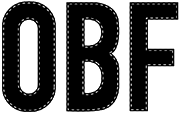Seamed and seamless activewear represent two major technological directions in today’s athletic apparel industry. Each comes with its own set of advantages and disadvantages, tailored to different consumer needs and use cases.
Below is an in-depth comparison across multiple dimensions.
I. Core Definitions
•Seamed Activewear
•Definition: Garments constructed using traditional cut-and-sew methods, where different fabric panels are stitched together with visible seams. This is the most common type of apparel seen in everyday life.
•Seamless Activewear
•Definition: Garments made using advanced circular knitting technology where the product is knitted in a tubular form on computerized machines. Although minor seams may exist (e.g., gusset joins), the main body lacks side seams, back seams, or other major stitching lines.
II. Comparative Table
Dimension Seamless Activewear Seamed Activewear
Manufacturing Method One-piece circular knitting, computer-programmed Traditional pattern cutting and sewing
Comfort Extremely high; no seam irritation; second-skin feel Good, but potential chafing or pressure from seam lines
Support & Sculpting Zoned compression through knit density variation Achieved through design structure, built-in cups, firm panels
Design Flexibility High; allows intricate 3D jacquard and pattern knitting High; depends on fabric prints and color-blocking via panels
Breathability Excellent; mesh zones can be knitted directly into fabric Good; relies on fabric properties
Cost & Pricing High manufacturing cost; premium retail pricing Lower cost; more accessible pricing
Durability Relatively lower; risk of snagging, single-layer structure Higher; reinforced seams enhance longevity
Best Use Cases Yoga, Pilates, gym training, casual activewear High-impact sports, running, HIIT (where high support is needed)
III. In-Depth Analysis
1. Manufacturing Process
•Seamed Activewear:
Involves multiple stages: design, pattern-making, cutting, sewing, and finishing. Requires extensive labor, different machines, and results in greater fabric waste.
•Seamless Activewear:
Highly integrated process. Once the digital program is set, the circular knitting machine produces nearly complete garments in one go, requiring minimal cutting and finishing. High degree of automation with nearly zero fabric waste.
2. Wear Experience
•Seamed:
Primary downside is seam irritation. Areas like side seams, straps, or bra underwires may cause chafing, redness, or discomfort—especially during dynamic movements.
•Seamless:
Eliminates friction from seams. Fits like a second skin and offers exceptional freedom of movement. Ideal for low- to medium-impact sports where comfort is prioritized.
3. Functionality & Performance
•Seamed Activewear:
Functional performance—such as support and shape retention—is achieved via structural design (e.g., reinforced panels, molded cups, adjustable elements). Offers stronger and more targeted support for high-intensity activities.
•Seamless Activewear:
Functionality is built into the fabric through engineered knit zones:
•High-density knitting: Provides compression and sculpting at the bust, waist, or thighs.
•Mesh knitting: Enhances ventilation at high-sweat zones like underarms, back, or behind knees.
•Elastic yarn blending: Delivers directional support and adaptive stretch.
•While overall support is adaptive and body-conforming, it may not match the rigid support of structured, cup-integrated seamed garments for high-impact needs.
4. Cost Structure & Market Positioning
•Seamed:
Mature technology with a well-established supply chain. Lower production cost makes it the mainstream choice, offering broader market appeal at affordable prices.
•Seamless:
High capital expenditure (a single seamless machine can cost tens of thousands of USD), plus a need for specialized programming and knitting expertise. Despite labor and material savings, R&D and equipment amortization make unit prices higher. Generally positioned in the mid-to-premium segment.
IV. Choosing the Right Activewear
Opt for Seamless Activewear if you:
•Prioritize ultimate comfort and second-skin feel
•Engage in low- to medium-intensity workouts like yoga, pilates, strength training
•Appreciate modern aesthetics and technical design
•Have a flexible or higher budget
Opt for Seamed Activewear if you:
•Participate in high-intensity workouts (e.g., running, HIIT) and need maximum support
•Value long-term durability and better cost-performance ratio
•Prefer classic styles, bold prints, or functional elements like adjustable straps
V. Conclusion
Seamless technology represents a cutting-edge innovation in activewear, offering a futuristic combination of comfort, functionality, and style—albeit at a higher price. Conversely, seamed activewear remains a reliable and versatile choice, especially when durability and high-impact performance are essential.
Industry Trend:
Many leading brands are now integrating both technologies—using seamless construction for comfort and aesthetic appeal, while reinforcing high-stress areas with strategic seamed components. This hybrid approach may become the dominant design philosophy in the next generation of activewear.



